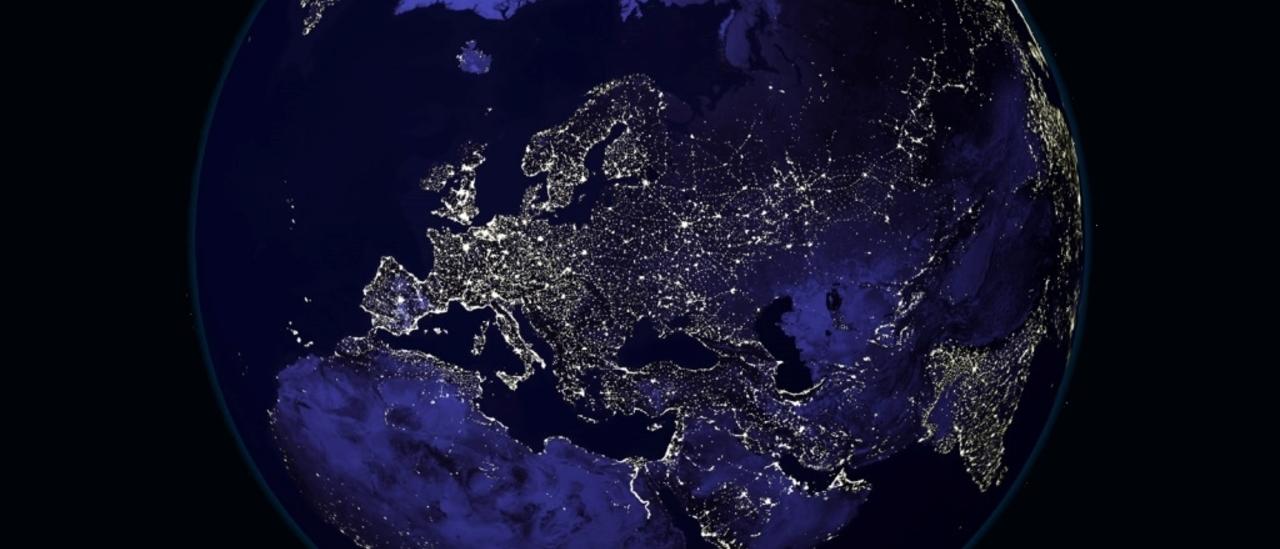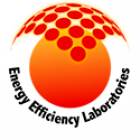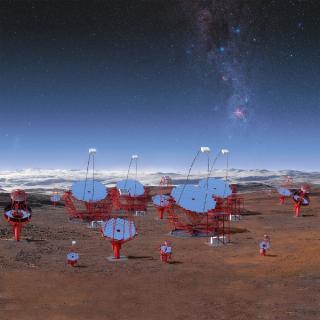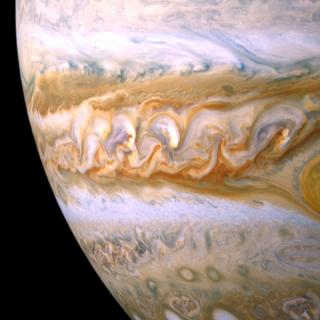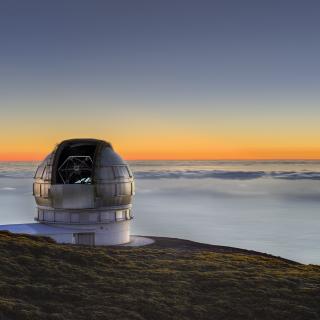General
The loss of darkness due to the increased use of Artificial Night Light (ANL) has a dangerous, but sometimes neglected, impact on natural ecosystems. In certain scenarios it is so weak that humans cannot detect it, but it has been shown that 30% of vertebrates and 60% of invertebrates - nocturnal and very sensitive to light - are threatened.
The aim of EELabs is to maximize the energy efficiency of new lighting technology - mainly LEDs - while minimizing their effect in the form of light pollution - sky glow - on natural ecosystems in the Macaronesia. EELabs will propose activities to acquire a deep knowledge of both LED lighting and natural ecosystems of the Macaronesia to achieve a sustainable growth where the increase of the LAN, a consequence of the economic development, does not compromise the natural spaces by an excessive increase of the light pollution.
EELabs (eelabs.eu) is a project financed by the INTERREG V-A MAC 2014-2020 Programme, co-financed by the FEDER (European Regional Development Fund) of the European Union, under contract number MAC2/4.6d/238. Five centres in Macaronesia work in EELabs (IAC, ITER, UPGC, SPEA-Azores, SPEA-Madeira)
Members
Results
Activities carried out in 2020
In general terms, it is important to point out that the project suffered a halt in activity between March and June as a result of total or partial confinement due to the pandemic caused by the COVID19 virus. All project actions will suffer delays of a minimum of six to twelve months. The main delay occurred in the installation of the Light Pollution Laboratories (LPL) photometers. The closure of the companies developing the equipment also affected the development of the LPLs.
The tasks and objectives addressed during 2020 are listed below:
January:
Elaboration and dissemination of the press release of the Quadrantids 2020, published on 2 January. And live broadcast of the first meteor shower of the year.
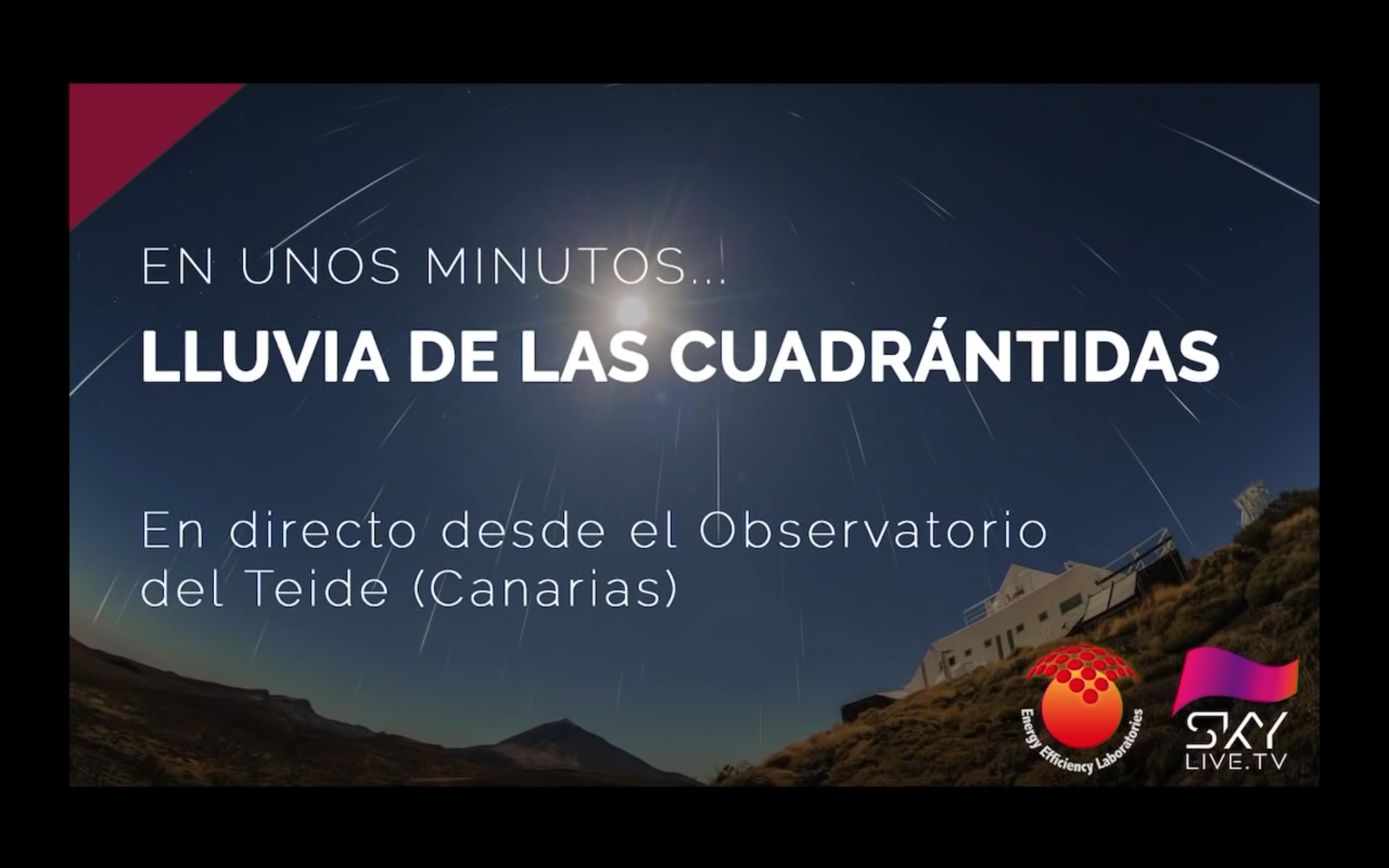
At the ULPGC The first team meetings are held with the ULPGC members participating in the project, with Juan Ruiz Alzola as Principal Investigator, and Juan Manuel Caballero and Manuel Medina, professors at the ULPGC, as research staff.
February:
In mid-February (17/02/2020) two people joined the positions of Computer Engineer Energy Efficiency Labs (EELabs) (REF. PS-2019-083) and Journalist Energy Efficiency Labs (EELabs) (REF. PS-2019-084) at the Instituto de Astrofísica de Canarias.
Search for locations, installation of several photometers at the Roque de los Muchachos Observatory and operational tests. For this purpose, a trip was made to La Palma and several meetings were held with the Cabildo and the Town Councils.
Installation of several photometers at the Teide Observatory, dismantling, revision and updating for a new commissioning. Tests were also carried out during the months of February and March.
Launch of the EELabs project's Facebook and Twitter social network accounts, with daily updates and weekly monitoring. Linking of the project's web portal on the IAC website; and translation of the EELabs web portal homepage into English, which is now available in three languages (Spanish, Portuguese and English).
In February, a new member joined the ULPGC team, in the position of Computer Engineer, from the Vice-rectorate for Research, Innovation and Transfer: Laboratories to measure the Energy Efficiency of artificial light at night in protected natural areas of Macaronesia (EELabs position).
In this month, from the ULPGC, the Computer Engineer contracted on the project, Idafen Santana, attends a meeting in Tenerife, at the headquarters of the IAC, to coordinate and start the tasks related to the development of web tools and control software for the Light Pollution Laboratories. The prototyping of the web tools related to this activity also begins.
March:
First follow-up meeting of the project (02/03/20202) for the presentation of the new members of the team and the coordination of its launch to the public.
Launch of the press release for the launch of the project. Three of the five institutions involved in the project published it on their websites, detailing the participation of each (IAC, ULPGC and ITER).
Visit of the Mayor of Güímar, one of the municipalities where the photometer networks will be installed, to the Teide Observatory (3 March).
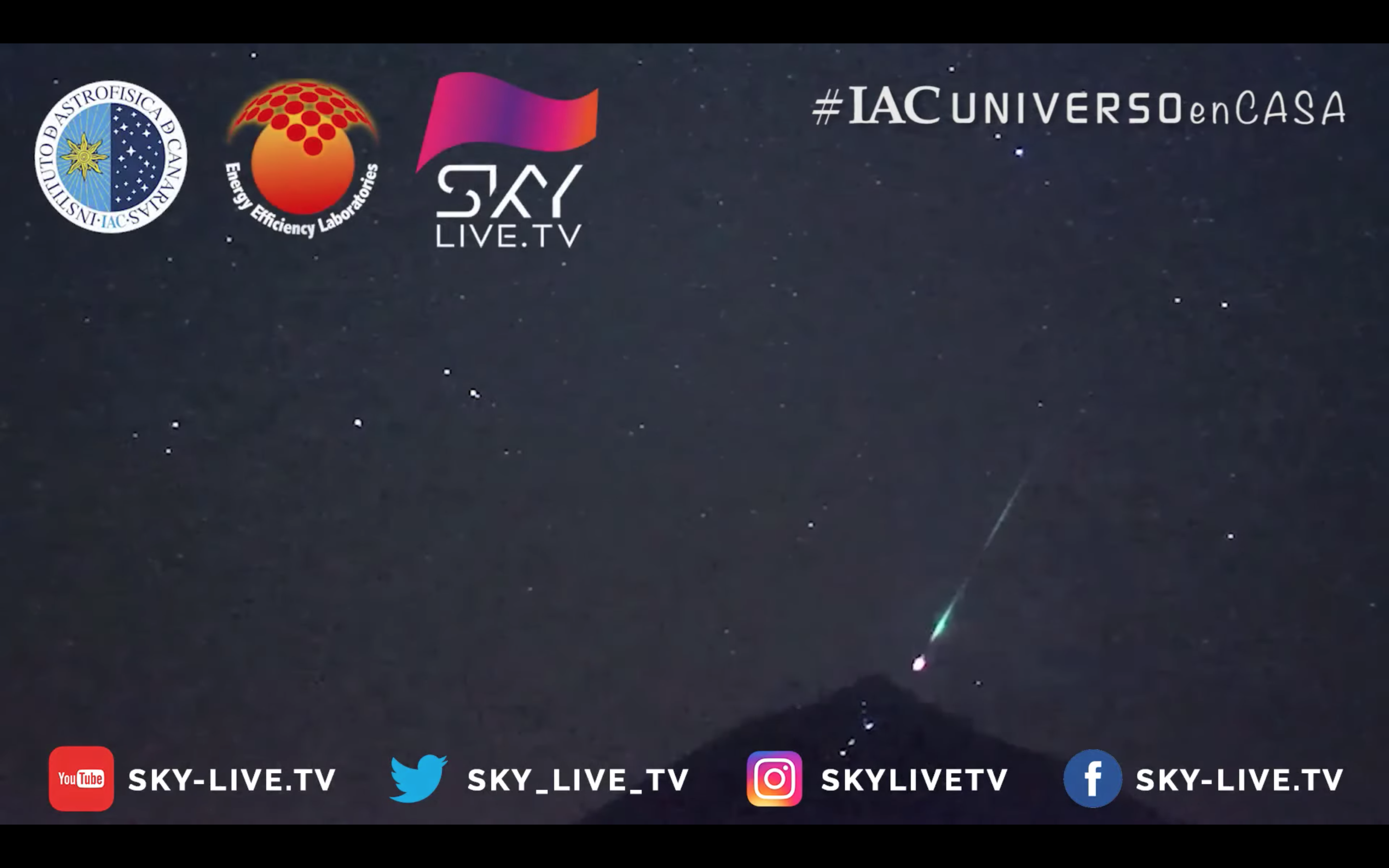
Due to measures taken to prevent the spread of the COVID-19 coronavirus, project activities were shifted to teleworking. The planned trips to assess the points where the photometers will be installed in Madeira and Corvo (Azores) were cancelled, and the actions to install photometers in Tenerife, La Palma and Gran Canaria were paralysed for the same reason. On the other hand, to support and accompany the citizens who were unable to leave their homes during those days, a series of daily broadcasts were launched as part of the #IACUniverseAtHome initiative, through the sky-live.tv YouTube channel. These daily live broadcasts on Astronomy, in which the three EELabs members contracted at the IAC participated, ended on 26 April.
Access to the 35 broadcasts and the press release.
They were also made known through the IAC press release "The IAC joins the cultural and educational initiatives in front of COVID-19 with the campaign #IACUniversoEnCasa" . And through the IAC blog post "11 Citizen Astronomy and science outreach projects during isolation". As of 1 December 2020, the impact of these broadcasts is 62,598 views on YouTube.
Live broadcast of the March SuperMoon on the sky-live.tv channel, accompanied by a press release (6 March).
The ULPGC carried out tests and development of the LPL control tools. In this phase, integration with third-party APIs is being studied, especially the Google Maps API, which includes visualization layers for the photometers deployed, belonging to the EELabs project's own network, as well as those already deployed in the STARS4ALL project. The first version is developed with the basic operations of data management and visualization of geolocated markers.
April:
Drafting of the Collaboration Agreement between the Instituto de Astrofísica de Canarias and the Güímar Town Council; and submission of the report for approval by the Ministry of Science and Innovation. This agreement establishes the general guidelines for collaboration between the IAC and Güímar Town Council, for advice from the IAC on issues of light pollution and associated regulations; and for collaboration between the two institutions with outreach and educational activities in the municipality for the dissemination of astronomy and associated technologies. This document is the previous step to carry out the proposed municipal ordinance.
Development of scripts for the EELabs portal. Since the beginning of the project, work has been carried out to develop web tools and software to control the Light Pollution Laboratories.
Once all the scripts and functions necessary to obtain and process the information have been created, a data portal is being developed that will be launched in 2021. One part of the portal will allow us to select a sensor and use predefined filters to obtain graphs with the sensor data, as well as to download the data using the Skyglow Data Format 1.0 standard. Another part of the portal will allow us to calibrate the SG sensors. For this part, another online document has been created where the sensors that are being calibrated are added and an api for the portal to see which sensors are being calibrated.
In addition, throughout the project, technical meetings have also been held on the Science to be carried out with the project, for the elaboration of an Article on the propagation of light pollution from LPL-LED.
Dissemination of the press releases "How to see the April Supermoon from home" and "Lyrids 2020: wishes through the window".
The ULPGC integrated the data sent from the Broker (Mqtt), a replica of the Influx DB, on a virtual machine instance, running on the Google Cloud Platform. In this way, the data is replicated and is accessible from the different development and publication networks with which we work. Visualization of the data through a Grafana dashboard. These tasks are carried out in conjunction with those developed by IAC, with a view to their integration.
On behalf of SPEA, the Facebook group Aves Marinhas da Macaronésia (1,400 members) was created for the dissemination of various SPEA projects on seabirds. This platform has served as the basis for several news items related to the topic of light pollution and its impact on biodiversity and the INTERREG EELabs project.
May:
In May, the ULPGC defines a first data model for the management of the photometer sets to be selected by the user. First integration with MongoDB database for CRUD operations for users, as well as their authentication.
While SPEA monitors shearwater colonies (124 nests) on the island of Corvo, Azores, for evaluation of reproductive success and nest departure rate, in order to relate the number of crashes produced by light pollution.
June:
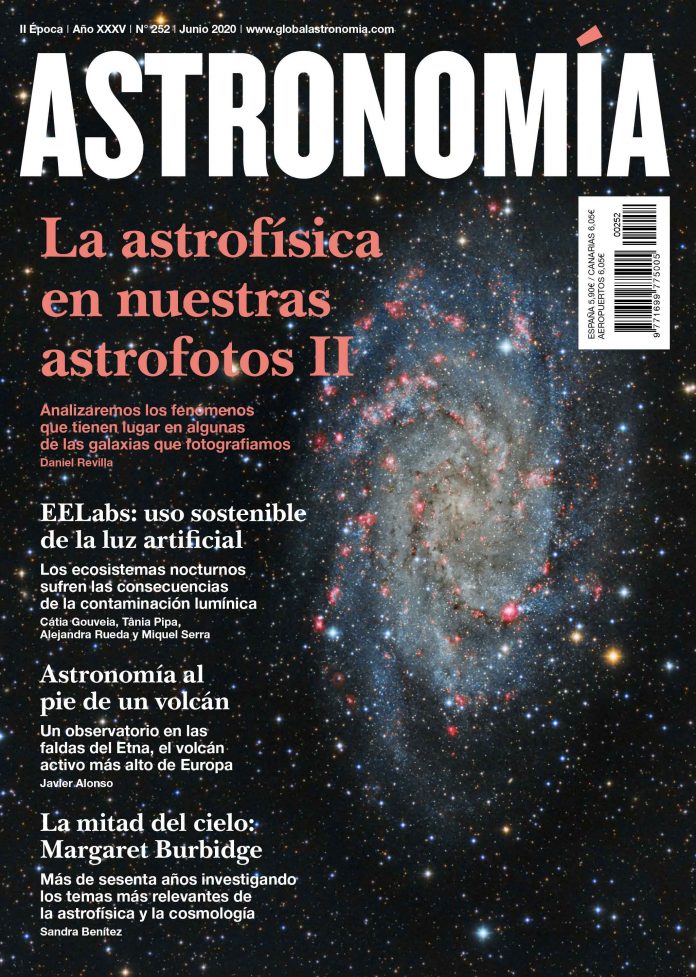
Publication of the first article on EELabs in the journal Astronomía, on how light pollution affects seabirds in Macaronesia. "EELabs: sustainable use of artificial light" (on the cover)
After the tests carried out, the ULPGC team decided to evolve the existing prototypes by migrating them to DASH, as an integrated framework, which allows them to work more efficiently with the stored time series data. The migration process of the existing functionalities for sets of photometers was carried out, being integrated with the rest of the functionalities developed by the other members of the project.
Meanwhile, SPEA continued with the monitoring of shearwater colonies (124 nests) on Corvo Island to assess breeding success and the rate of nest fledging, in order to relate it to the number of nest crashes caused by light pollution.
July:
On Thursday 9 July, the IAC members of the EELabs project visited the Town Hall of Güímar, the municipality where the LPL1 photometer network will be installed. There, Dr. Miquel Serra-Ricart explained the project to some of the members of the municipal corporation, took the proposal for a collaboration agreement between the IAC and the Güímar Town Council, the first step towards the drafting of a municipal ordinance to prevent light pollution, and left one of the MINIO controllers for installation on the roof of the building, after visiting its location (images).
On the weekend of 10-12 July, the EELabs Brainstorming Weekend at the Teide Observatory (EELabs BWOT) took place, attended by several members of the project to discuss various aspects of the project and during which the first four photometers of the LPL1 network were installed.
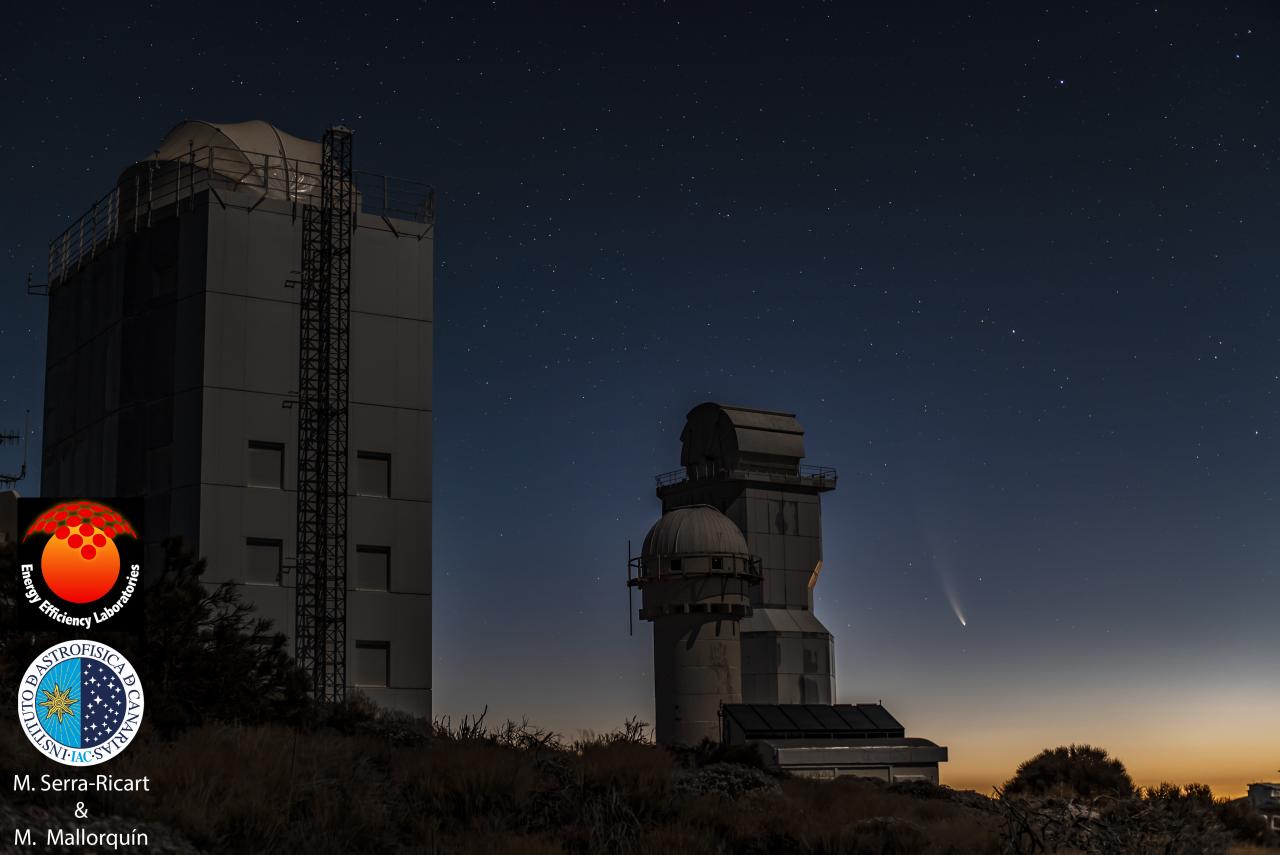
During that weekend, the press release The comet NEOWISE from the Canaries was also broadcast, with the images taken early Saturday morning by the members of the project. And the recording of the videos "How to see comet C/2020 F3 (NEOWISE)" and "Keys to observe comet NEOWISE C/2020/F3".
The ULPGC computer engineer contracted in the project attended the BWOT project meeting, held in Tenerife, where, among other issues, the direction to be taken with respect to the functionalities already developed by ULPGC was discussed.
The next steps to be implemented were also defined. The map management and visualisation functionalities will be divided into two fundamental types: management of connected and non-connected networks, depending on the density of the photometers in the network and their spatial distribution. Depending on this, the capabilities and types of visualisations will be different.
The network management functionalities were further developed in DASH.
SPEA continued with the monitoring of the shearwater colonies (124 nests) on the island of Corvo in order to evaluate the reproductive success and the rate of the nest outflow, in order to relate this to the number of nest crashes caused by light pollution.
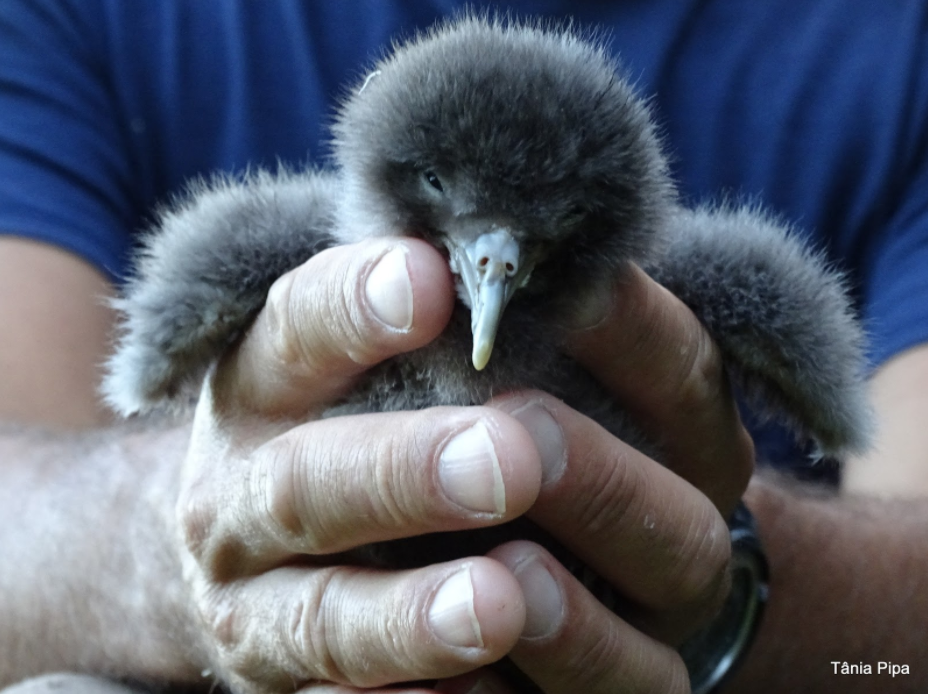
It also carried out a survey of the painho-de-monteiro Hydrobates monteiroi on the island of Corvo, with detection on the islet of Ponta do Marco, to monitor the population and assess the impact of light pollution on the species on the island, without recording the fall of birds disoriented by the lights.
August:
Between 1 and 3 August, part of the IAC team travelled to La Palma to replace some of the photometers installed at the Roque de los Muchachos Observatory and to check the functioning of the MiNiO located at this observatory. A new photometer was also installed at the Espigón del Roque and a meeting was held with the Innovation Department of the Cabildo de La Palma.
Between the 4th and 6th of August, we also travelled to Gran Canaria to hold a meeting with the mayor of Tejeda, the municipality of Gran Canaria where the LPL5 will be installed, and to visit the sites where this network of photometers will be located. A meeting was also held with the director of the Parador de Tejeda and two videos were recorded prior to the Perseid meteor shower and audiovisual material of the LPL5.
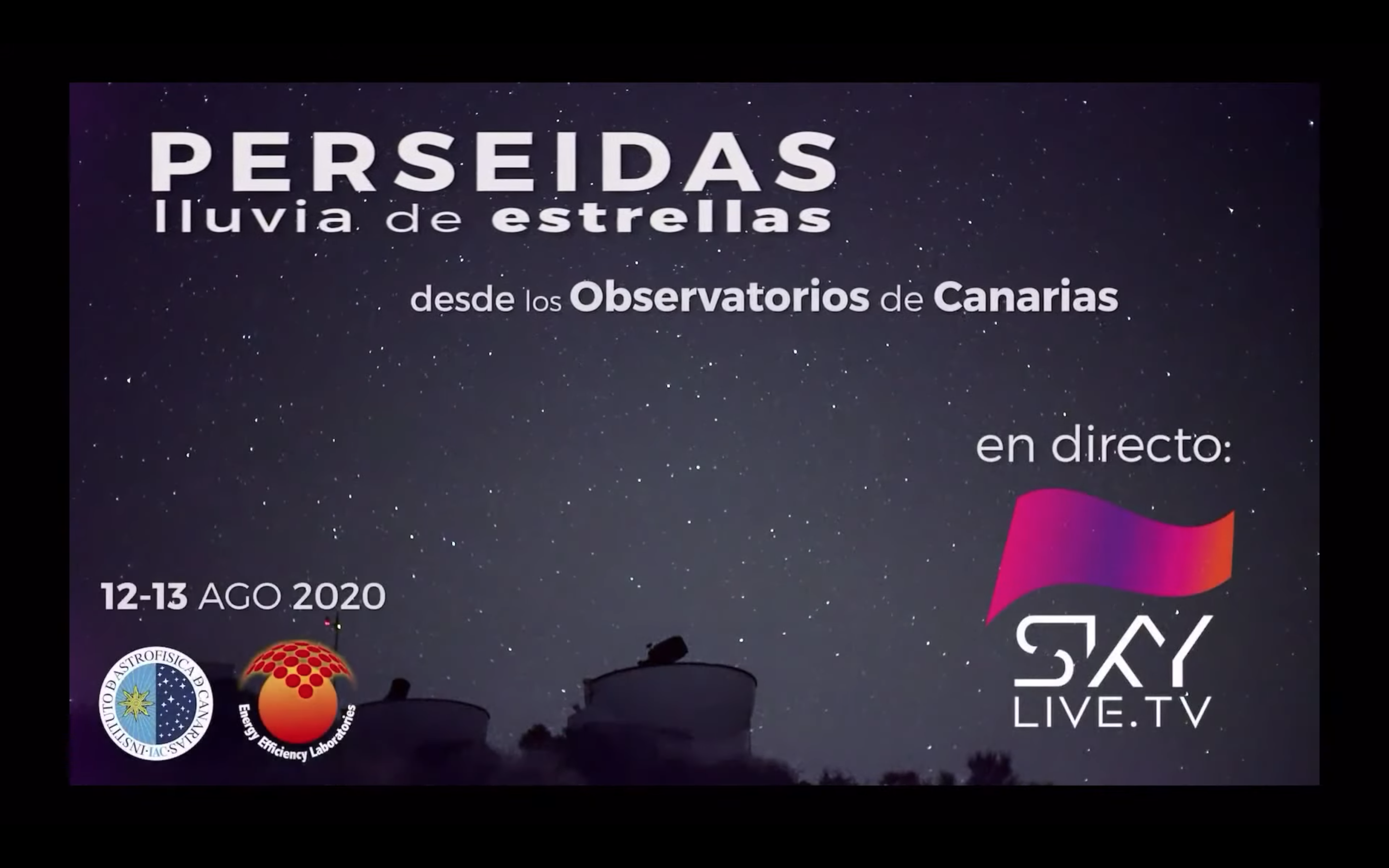
The nights of 11-13 August saw the peak activity of the Perseids meteor shower. This event was announced with the press release "Perseids 2020" and was broadcast through the sky-live.tv channel from the Canary Islands Observatories, fulfilling deliverable REC 3.
The ULPGC developed user management functionalities through an API. These functionalities work on the MongoDB database, in which the identity and lists of photometers associated with each user are stored. This information is integrated with the API for managing the lists and the future display preferences of each list.
For its part, SPEA carried out the "Campanha SOS Estapagado" - (Pardela Pichoneta).
From 7 to 31 August, daily patrols were carried out to save Puffinus puffinus shearwaters disoriented by the public lighting of Vila de Corvo, from 23:00-01:00 with 24h of prevention, during which 13 juveniles were rescued and released (biometrics collected, ringing and georeferencing of the locations of the falls to identify the critical points, mitigation targets in 2021) and 3 dead juveniles were found. The patrols were supported by the island's population and 4 volunteers were present on a daily basis.

Monitoring of the Atlantic shearwater colonies (124 nests) on the island of Corvo to evaluate the reproductive success and the rate of nest fledging, in order to relate this data to the number of nest crashes due to the impact of light pollution.
Raising public awareness and collecting signatures for a public lighting blackout during the SOS Cagarro 2020 campaign. A total of 207 people were made aware of the campaign and were in favour of switching off the lighting. This action was carried out in synergy with the LuMinAves project.
September:
The IAC and the ULPGC publish the press release "Natural darkness to preserve night-time ecosystems", which describes the actions carried out during the summer months of 2020 and talks about the installation of the first photometers of the EELabs project.
The September equinox also takes place during this month, which is broadcast from the dolmen of Valdecaballeros (Extremadura) and which is announced in the press release "The autumnal equinox from the Dolmen of Valdecaballeros". On the occasion of this trip to Extremadura, the workshops "The Skies of Extremadura" are given and Dr. Miquel Serra-Ricart participates in the I Cross-border Congress on Light Pollution.
On 29 October, Dr. Miquel Serra-Ricart participates in the 1st Conference on Sky Protection and Employment Opportunities in La Palma, organised by the Starlight Foundation and the Cabildo de La Palma, within the framework of the Astrofest La Palma 2020. A small press release is produced on the EELabs website.
The ULPGC develops the map visualization layers using DASH Leaflet, integrated with the rest of the infrastructure elements. These maps link the visualisation components of the photometer networks with the statistical calculations that will be displayed, both for each photometer and for the network.
SPEA continues with the monitoring of the Atlantic shearwater colonies (124 nests) on Corvo Island for the evaluation of breeding success and nest fledging rate, in order to relate these data to the number of nest crashes due to the impact of light pollution.
Raising public awareness and collecting signatures for a public lighting blackout during the SOS Cagarro 2020 campaign. A total of 207 people were made aware of the campaign and were in favour of switching off the lighting. This action was carried out in synergy with the LuMinAves project.
October:
From 6 to 9 October the Instituto de Astrofísica de Canarias holds the Workshop "Dark & Quiet Skies for Science and Society", which will have a face-to-face version in the form of the Congress in October 2021.
On 15 November the collaboration agreement between Güímar Town Council and the IAC was published in the Boletín Oficial del Estado (https://bit.ly/39vWokF), the first step towards the installation of the ELP and the signing of the Ordinance on the regulation of artificial light at night.
During these months, collaborations have also been carried out with other institutions, such as the Atacama Astronomical Observatory, to extend the network of photometers and obtain data on light pollution in places with natural darkness in the Southern Hemisphere and to be able to compare with our sites in Macaronesia.
Between 19 and 21 October, part of the project team travelled to Gran Canaria to meet with the Tourist Board and agree on collaboration in outreach activities. During this trip, the MiNiO was also installed on the roof of the Tejeda Town Hall and 3 LPL5 photometers were installed. Another of the actions carried out during this trip was the meeting between the project coordinator at the IAC and the ULPGC group. And the visit to the PLOCAN platform, with the aim of proposing an experiment to measure light pollution on the coast of the island.
#SOSCagarro2020. The month of October also saw the #SOSCagarro activity, organised by SPEA, with the participation of colleagues from the Sociedade Portuguesa para o Estudo das Aves. It was at this time that the EELabs project was presented in Portugal, through the press release: "Corvo Island turns off its lights to protect seabirds".
SPEA: Corvo island turns out the lights to protect seabird
EELabs: Corvo Island turns off its lights to protect seabirds
October also saw the incorporation of engineer José David González (ITER). To meet the objective of installing efficient laboratories, his task in the project will be to analyse and provide autonomy to the MiNiO devices. This will be done by executing an Energy Test Plan for the analysis of the MiNiO consumption in all its operating modes in order to dimension an autonomous and intelligent power system. In this month he starts his training as an EElabs technician.
On 29 October a meeting was held with Miquel Serra at the Teide Observatory to present the devices that form part of the LPL networks with special attention to the MINiO device/controller. During the meeting we learned about the important aspects of the device (power supply, communication, design, etc.), the components that make it up and the needs it presents.
In the ULPGC the functionalities of list control by users are developed from DASH Leaflet, integrating with the existing API of users and lists. The result of these operations is in turn integrated with the graphical interface. Photometer filtering functionalities are added to improve the usability of the interface.
Meanwhile, on 9 and 12 October, SPEA colleagues gave two talks in collaboration with the maritime tourism company "Picos de Aventura". The talks, focused on tour operators, were an introduction to this sector on light pollution and the EELabs project.
On 15, 21 and 22 October, 3 environmental education classes were held with the school of the municipality of Nordeste, on the island of São Miguel. A total of 51 students in 5th grade (10 years old) were given a lesson on Atlantic shearwaters, their biology and threats, including light pollution, and the projects being carried out on the island to protect them, such as the EELabs project.

Monitoring of shearwater colonies (124 nests) on Corvo Island to assess breeding success (37%) and nest fledging rate (39%), in order to relate the number of fledglings to the impact of light pollution. Seventy-one young shearwaters were marked to check if they are affected by light pollution and seven were recaptured (disoriented by street lighting) during the SOS Cagarro campaign.
On Corvo Island, the SOS Cagarro Campaign (SPEA and the island's Natural Park) ran from 12 October to 31 October with an average of 20 volunteers per day (after this period and given that the peak of falls was on 21 October, the team was in prevention) actively collaborating in the brigades to save shearwaters. In total 662 shearwaters Calonectris borealis were saved (660 ringed, biometry and georeferencing of the recorded falls), 9 were recaptures, 7 of them were juveniles previously ringed in the nests and disoriented by the public lighting of Vila do Corvo, unfortunately there were 17 dead.
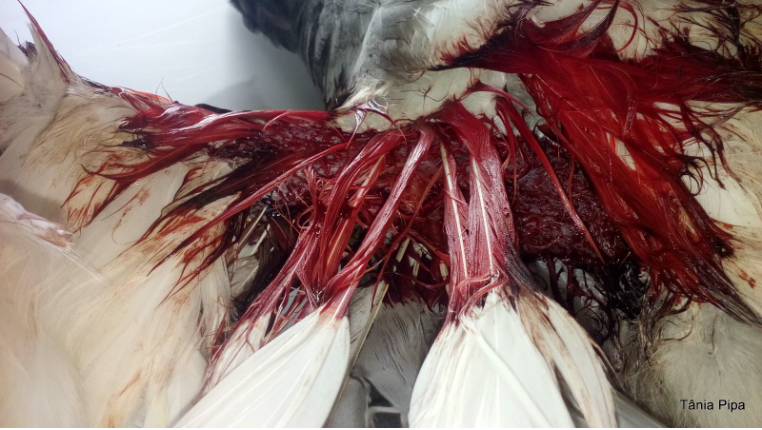
The blackout carried out by the Municipality of Corvo (after the collection of signatures and the awareness of the population) contributed to a lower number of falls from 26 to 30 October (21:00-04:00h) and from 31 to 7 November (01:00-05:00h), in the week of the general blackout, there were only 9 falls to record.
Public presentation of the project on the island of Corvo with the participation of 60 people and promotional report for RTP Açores.
Awareness action for the Mouzinho da Silveira Primary and Secondary School in the SOS Cagarro Campaign on the island of Corvo, in partnership with the island's Natural Park, 22 participants.
Presentation of the EELabs project during the launch of the SOS Shearwater 2020 Campaign in the Azores.(3,4 Mil visualisations)
In São Miguel, more specifically in Vila Franca do Campo, SPEA also actively participated in the SOS Cagarro Campaign, in which a total of 519 shearwaters were saved (also ringed and with biometrics and georeferencing recorded), 25 dead (mostly by collision) and 5 injured. And after raising the awareness of the VFC City Council, there was a public lighting blackout in the coastal areas, helping to minimise the impact of light pollution.
Between the 22nd and 30th of October a daily volunteer action was organised during the "SOS Cagarro 2020" campaign. During these days 31 volunteers participated in the talk/presentation of the project and collaborated in the rescue and ringing of the species "Calonectris borealis". The campaign that took place in the municipality of Vila Franco do Campo on the island of São Miguel allowed that during these nine nights a total of 358 juvenile shearwaters were rescued (342 alive, 2 injured and 14 dead) thanks to the collaboration of these volunteers.
Dissemination of the environmental education programme for schools in Madeira and the Azores, including talks and activities related to light pollution.
Launch of the "Save a Seabird in Madeira" campaign. Involvement of 5 municipalities and one hotel in the reduction of public lighting.
News report on RTP Madeira, minute 13 of the 2nd part, here.
Interview in Madeira Viva on RTP Madeira at https://www.rtp.pt/play/p6693/e500582/madeiraviva2020/872447 (beginning of the 2nd part).
November:
On 9 November, the project coordinator, Miquel Serra-Ricart, participates in a meeting with the Mayor of Güímar and the Councillor for Urban Planning in order to define the monitoring committee of the Agreement between the City Council and the IAC; and also to present the Ordinance Proposal. This document will also be translated into Portuguese and will be adapted to Portuguese legislation, foreseeably at the beginning of 2021.
From 8 to 15 November, part of the IAC project team travels to La Palma for a new follow-up meeting on the installation of photometers with the Cabildo of La Palma; and to visit new installation sites. Also during these days the photometers installed at the Roque de los Muchachos Observatory are replaced, the MiNiO is also replaced, and a new photometer is installed at Los Andenes.
On 19 November, the MiNiO controller is definitively installed on the roof of the Güímar Town Hall, to provide coverage for the SG-WAS LORA photometers of the LPL1. That day was also used to contact several educational centres in the municipality, making progress in the dissemination of the project in schools and institutes. On the following day, the replacement of the SIM photometers already installed by LORA at LPL1 and the installation of a new device under the Izaña atmospheric observatory began.
Between 24th and 27th November, a trip was made to the islands of Lanzarote, La Graciosa and Fuerteventura, in order to obtain the collaboration of the local councils in the EELabs project. During this trip, contact was also made with educational centres on the islands, included in the project's dissemination proposal, and with the Astronomical Association of Fuerteventura, with whom collaboration in the form of dissemination talks was also planned.
Throughout these months, work has also continued on the calibration of photometers at the Teide Observatory.
Several meetings were held with the head of the ITER electronics department, Jesús Fernández, for the management of the Energy Test Plan. During these meetings, different tests are proposed to which the MiNiO and its components will be subjected in order to calculate the electrical consumption for different operating modes. In addition, the electronic test bench is designed for the analysis of the MINIO in the electronics laboratory. After these meetings, the Energy Test Plan is structured and drafted.
The ULPGC develops the visualisation capabilities of aggregate statistics, based on the time records of each photometer. In this first iteration, work is carried out on individual photometers, with time periods of one week of data. These data are presented using graphs produced natively with Pandas and Plotly.
On 4 November, SPEA held a talk to raise awareness of the Atlantic Shearwater Calonectris borealis at the Expolab Science Centre on the island of São Miguel. (28 participants). Explanation of the SOS Cagarro campaign, the biology of the species and its threats, mainly light pollution.
Webinar on light pollution in Macaronesia, https://www.spea.pt/agenda/evento/webinar-poluicao-luminosa-na-macaronesia/, in a joint organisation between Madeira and the Azores.
Installation of the TESS photometer on the island of Corvo.
TESS photometer installed in the Basic and Secondary School, Mouzinho da Silveira, Corvo Island, Azores.
December:
During the month of December, work continued on the deployment of the photometer networks in Tenerife, La Palma and Gran Canaria, defining possible sites and contacting individuals and public institutions to request permits.
Celestial event broadcasts were made of the Geminids 2020, where the EELabs promotional video was premiered, and of the superconjunction of Jupiter and Saturn. Images of these two astronomical events were also taken from Gran Canaria, thanks to the collaboration of the renowned astrophotographer Juan Carlos Casado, for the promotion of LPL 5 (Conjunction and Geminids).
A proposal was drafted for a regional regulation governing outdoor lighting for the protection of the night sky.
Once the Energy Test Plan had been defined, structured and drafted, ITER proceeded to list all the material necessary to carry out its execution. The necessary memorandum for the acquisition of the components of a MiNiO and all the material necessary to build the electronic test bench is drafted. Pending legal approval.
The ULPGC continues to work on the improvement of the map interface and the management of user lists, as well as on the optimisation of the code to reduce the response time for data loading.
Scientific activity
News

